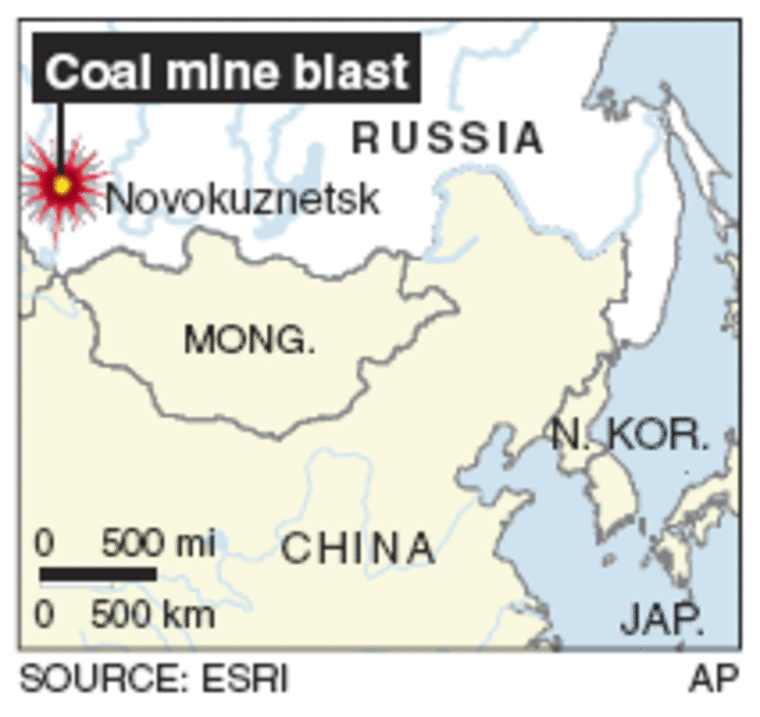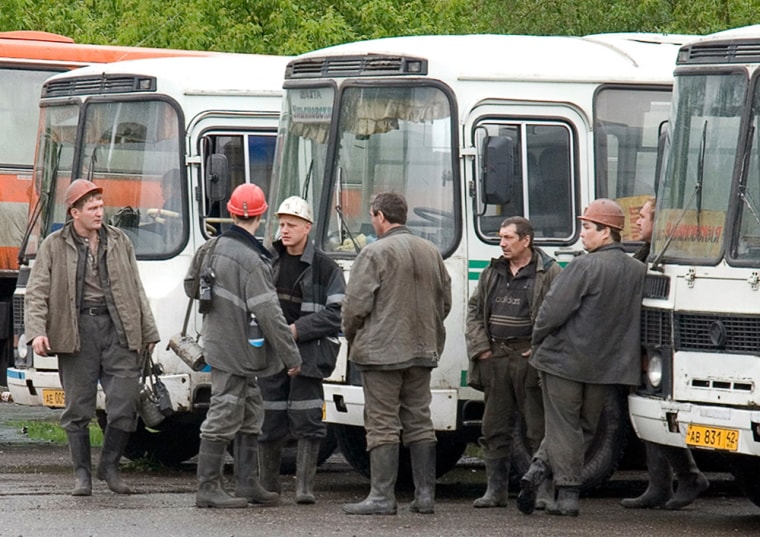An explosion at a Siberian coal mine killed at least 35 people on Thursday, emergency officials said, weeks after 110 miners died in a blast at a neighboring mine operated by the same company.
A spokeswoman for Russia’s Emergencies Ministry said three people were still missing at the Yubileynaya pit, in the Kemerovo region of western Siberia, about five hours after a methane blast tore through the mine.
Miners’ relatives, many of them in tears, drove in buses and taxis to the mine’s headquarters. They scoured a preliminary list of the dead hanging on a wall.
A soft drizzle rained down on the mine, a collection of rusting and poorly painted Soviet-era buildings surrounded by heavily wooded hills.
Kemerovo governor Aman Tuleyev declared Saturday a day of mourning in the region.
Russian President Vladimir Putin, on a visit to western Europe, spoke to Tuleyev by telephone to express his condolences, the local administration said.

The Yubileynaya mine, which opened in 1966 and employs around 1,000 people, is about 25 miles away from the Ulyanovskaya pit where 110 people died in March -- Russia’s worst mining accident since the collapse of the Soviet Union.
That accident triggered a massive government inquiry into safety in the mining industry, with initial conclusions pointing to poor safety standards.
Both mines are operated by Yuzhkuzbassugol, a company that is owned 50 percent by its management and 50 percent by steelmaker Evraz Group.
Russia’s industrial safety watchdog announced an inquiry into the latest accident. Evraz shares were down 2.9 percent in trading on the London stock exchange.
Pay structure
The pay structure in the Russian coal industry, where miners earn bonuses depending on their output, encourages workers to cut corners on safety, said a mining trade union official.

Alexander Sergeyev, chairman of the Independent Trade Union of Russian Miners, said the problem persists, even though Yuzhkuzbassugol reduced the proportion of wage packets that comes from bonuses after the March accident.
“The tragedy at Yubileynaya is a consequence of the policies that were in place earlier,” he said.
The industrial safety agency, RosTekhNadzor, said it was possible Yuzhkuzbassugol would have its licenses to operate Yubileynaya and other mines withdrawn.
“A working commission is at the mine. A decision on the recall of licenses can only be taken in accordance with the results of the commission’s work,” RosTekhNadzor spokeswoman Svetlana Vinokurova said.
The Kemerovo region is the hub of Russia’s coal mining industry. Around 2,000 miles east of Moscow, the area is a sprawling network of soot-stained industrial towns built around mines, and metalworks spewing out acrid smoke.
Soviet dictator Josef Stalin industrialized the area in the 1930s and many families have been mining coal in the region, known to many Russians as the Kuzbass, since then.
A billboard at the Yubileynaya mine’s entrance reads: ”Black gold is the pride of Kuzbass.”
Russia’s coal industry employs about 250,000 people, of whom about 120,000 work underground, the coal miners’ union said.
Yuzhkuzbassugol declined immediate comment on Thursday’s blast. It had been planning a share flotation prior to the Ulyanovskaya disaster, but the fate of the plan is now unclear.
An investigation into the March explosion concluded that a methane detection system designed to warn miners when gas levels had built up to dangerous levels had been disabled.